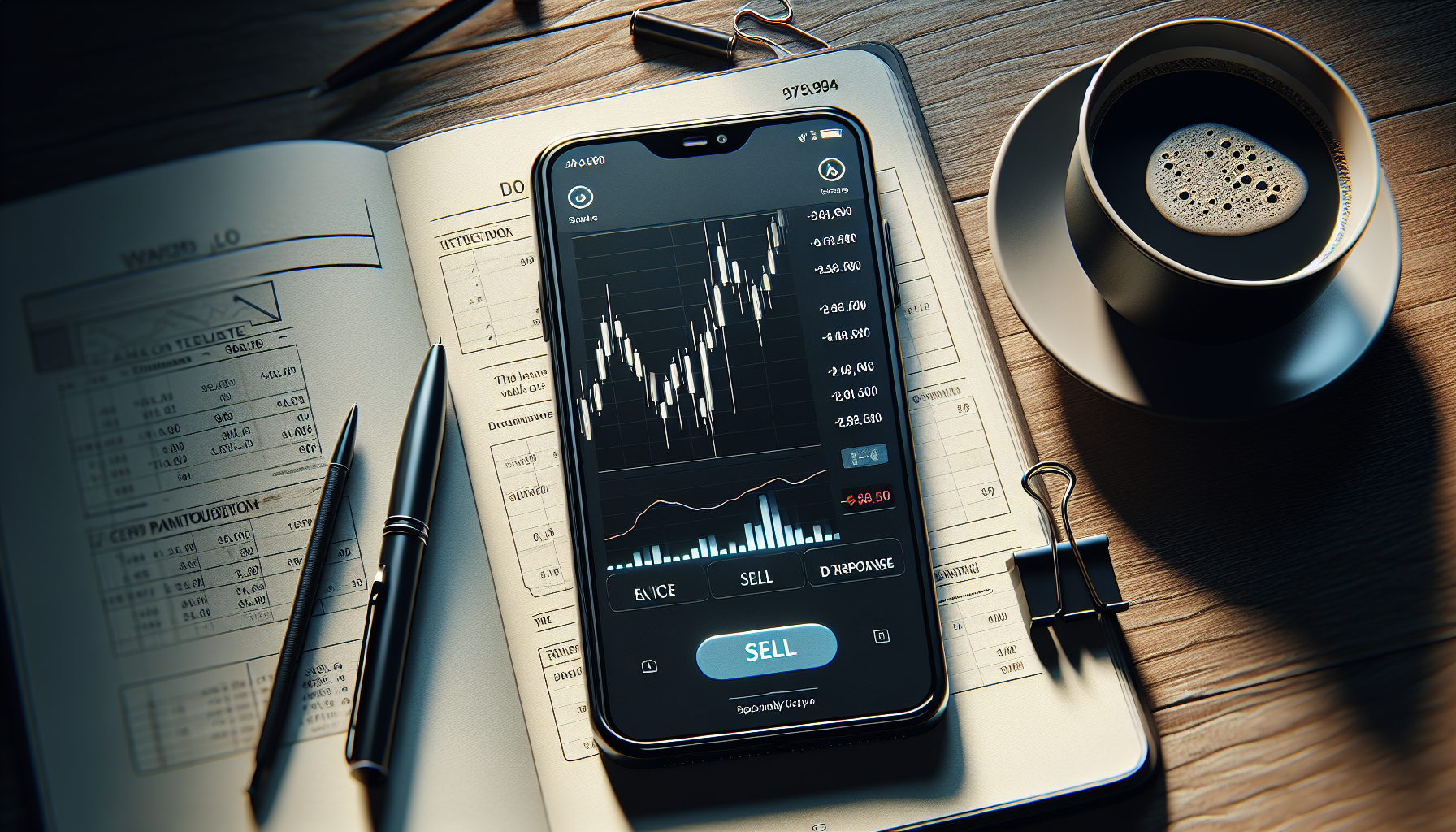How to Sell Stock on Robinhood | Step-by-Step Guide
Understanding Robinhood’s Trading Platform
Robinhood is a popular trading platform that offers commission-free trading for stocks, options, and cryptocurrencies. The company’s mission is to democratize finance for all by providing easy access to the financial markets. Robinhood’s user-friendly mobile app and web platform have made it a favorite among novice and experienced traders alike.
With Robinhood, you can buy and sell stocks, options, and cryptocurrencies without paying any commission fees. This has made investing more accessible to a wider range of people, especially those with smaller budgets. However, it’s important to note that while Robinhood doesn’t charge commissions, there may be other fees associated with trading, such as regulatory fees.
Overview of Robinhood’s Services
Robinhood offers a variety of financial services, including:
- Commission-free stock trading
- Options trading
- Cryptocurrency trading
- Fractional shares trading
- Cash management accounts
- Margin trading
These services are available through Robinhood’s mobile app and web platform, which are designed to be intuitive and easy to use. The company also provides educational resources to help users learn about investing and make informed decisions.
Robinhood’s Regulatory Status and Registrations
Robinhood is a subsidiary of Robinhood Markets, Inc., which is based in Menlo Park, California. The company operates through various entities, including Robinhood Europe, UAB, which is registered in Lithuania and supervised by the Lithuanian Financial Crime Investigation Service.
Robinhood Europe, UAB is also registered as a virtual currency exchange and depository wallet operator under Lithuanian law. Additionally, the company is registered under Polish law as a virtual assets service provider. It’s important to note that cryptocurrencies are not legal tender and are not backed by any government.
Types of Sell Orders on Robinhood
When selling stocks on Robinhood, you have two main types of orders to choose from: market orders and limit orders. The type of order you can place depends on the trading session and the eligibility of the stock you’re trading.
It’s crucial to understand the differences between these order types to make informed decisions when selling your stocks. Each order type has its own advantages and disadvantages, and choosing the right one can impact your trading outcomes.
Market Orders vs Limit Orders
Market orders are the default order type during regular market hours (9:30 AM to 4:00 PM ET). When you place a market order, you’re requesting to sell your shares at the best available price in the market. The execution price may differ from the last-traded price, as it depends on the current market conditions.
Limit orders, on the other hand, allow you to set a specific price at which you want to sell your shares. Your order will only be executed if the market price reaches or exceeds your set limit price. Limit orders are the only available order type during extended hours (7:00 AM to 9:30 AM ET).
| Order Type | Characteristics | Trading Hours |
|---|---|---|
| Market Order | Sells at the best available price | Regular market hours (9:30 AM – 4:00 PM ET) |
| Limit Order | Sells at a specific price or better | Extended hours (7:00 AM – 9:30 AM ET) |
Robinhood allows users to trade fractional shares, which means you can own a portion of a share rather than a whole share. When selling fractional shares, it’s important to keep in mind that these shares are not as liquid as whole shares and may have certain limitations.
Fractional shares can only be sold during regular market hours and cannot be sold during extended-hours trading. Additionally, fractional shares are not transferable to other brokerages, so you would need to sell them on Robinhood before moving your investments elsewhere.
Step-by-Step Guide to Selling Stocks on Robinhood
Selling stocks on Robinhood is a straightforward process that can be completed in just a few steps using the mobile app or web platform. Whether you’re looking to sell a few shares or your entire position, the process remains the same.
Before selling your stocks, it’s essential to review your order details carefully to ensure accuracy. This includes checking the number of shares or dollar amount you’re selling, the order type, and any applicable limits or stop prices.
Placing a Sell Order on the Robinhood App
- Open the Robinhood app and navigate to the stock you want to sell.
- Tap the “Trade” button and select “Sell.”
- Enter the number of shares you want to sell or the dollar amount you wish to sell.
- Select your order type (market or limit) and any additional parameters, such as a limit price.
- Review your order details and confirm the sale.
The process is similar on the Robinhood web platform, with the main difference being that you’ll click on the “Sell” button rather than tapping it.
Reviewing and Editing Your Sell Order
Before confirming your sell order, it’s crucial to review all the details to ensure accuracy. This includes:
- The stock you’re selling
- The number of shares or dollar amount
- The order type (market or limit)
- Any applicable limit prices or stop prices
- Estimated proceeds from the sale
If you need to make changes to your order, you can edit it before submitting. Once you’ve reviewed and confirmed your order details, submit the sell order, and Robinhood will execute it based on your specified parameters and market conditions.
Risks and Considerations When Selling on Robinhood
While Robinhood has made investing more accessible, it’s important to understand the risks and considerations involved when selling stocks on the platform. Market volatility, extended-hours trading, and fractional shares all come with their own set of risks that investors should be aware of.
By understanding these risks and considerations, you can make more informed decisions and potentially mitigate some of the uncertainties associated with selling stocks on Robinhood.
Extended Hours Trading Risks
Trading during extended hours (7:00 AM to 9:30 AM ET) comes with additional risks compared to trading during regular market hours. Some of these risks include:
- Lower liquidity: Fewer traders participate in extended-hours trading, which can lead to wider bid-ask spreads and more difficulty executing trades at desired prices.
- Higher volatility: With fewer participants, prices can be more volatile during extended hours, potentially leading to significant price swings.
- Limited access to market data: Not all market data may be available during extended hours, making it more challenging to make informed trading decisions.
It’s essential to consider these risks before engaging in extended-hours trading and to adjust your trading strategies accordingly.
While fractional shares make it possible to invest in high-priced stocks with a smaller budget, they also come with certain risks and limitations:
- Limited liquidity: Fractional shares are not as liquid as whole shares and can only be bought or sold through Robinhood.
- No transfers: Fractional shares cannot be transferred to other brokerages, meaning you would need to sell them on Robinhood before moving your investments.
- Execution limitations: Fractional shares can only be sold during regular market hours and may be subject to different execution rules compared to whole shares.
Understanding these limitations can help you manage your expectations and make informed decisions when trading fractional shares on Robinhood.
Additional Robinhood Features and Resources
In addition to its core trading functionality, Robinhood offers several features and resources to help users stay informed and manage their investments more effectively. These include price alerts, tax documents, and account statements.
By leveraging these features and resources, you can stay on top of your investments, make informed decisions, and simplify your tax reporting process.
Setting Up Price Alerts for Stocks
Robinhood allows you to set up price alerts for the stocks you’re interested in or have invested in. These alerts notify you when a stock reaches a specific price, helping you stay informed about potential buying or selling opportunities.
To set up a price alert:
- Navigate to the stock’s detail page in the Robinhood app or web platform.
- Tap or click on the “Add Alert” button.
- Enter the price at which you want to receive the alert and select whether you want to be notified when the stock price goes above or below that level.
- Choose your preferred notification method (push, email, or both) and confirm the alert.
Accessing Tax Documents and Account Statements
Robinhood provides users with necessary tax documents and account statements to help them manage their taxes and keep track of their trading activity. These documents include:
- Form 1099: Reports income from dividends, interest, and proceeds from the sale of investments.
- Consolidated 1099: Combines all 1099 forms into a single document for easier tax reporting.
- Monthly account statements: Detailed records of your trading activity, balances, and other account-related information.
You can access these documents in the “Account” section of the Robinhood app or web platform, under the “Statements & History” tab. It’s important to review these documents regularly and use them to assist with your tax reporting and financial planning.
See also:

